Firebird cichlid - Aulonocara hansbaenschi
Scientific name: Aulonocara hansbaenschi
Common name: Firebird cichlid
Family: Cichlidae
Usual size in fish tanks: 8 - 10 cm (3.15 - 3.94 inch)
014
Recommended pH range: 7 - 8.5
Recommended water hardness: 9 - 18°N (160.71 - 321.43ppm)
0°C 32°F30°C 86°F
Recommended temperature range: 22 - 27 °C (71.6 - 80.6°F)
The way how these fish reproduce: Spawning
Where the species comes from: Africa
Temperament to its own species: peaceful
Temperament toward other fish species: aggressive to smaller
Usual place in the tank: Middle levels
Food and feeding
Firebird Cichlids are omnivores and require a varied diet to thrive. A high-quality pellet or cichlid-specific flake food should form the staple of their diet, providing essential nutrients. To enhance their coloration and overall health, supplement their diet with regular treats of brine shrimp and bloodworms. These high-protein foods can be fed 2-3 times a week.
Vegetable matter is also important for these fish, and including spirulina flakes or algae-based wafers will help meet their dietary needs. Avoid overfeeding, as excessive protein can lead to health problems. Feed only as much as they can consume within 2-3 minutes, once or twice a day. Maintaining a varied diet is essential to keeping them healthy and showcasing their vibrant colors.
Origin
The Firebird Cichlid (Aulonocara hansbaenschi) is native to Lake Malawi in East Africa, a habitat known for its high biodiversity and alkaline water conditions. Lake Malawi’s rocky substrate and abundance of hiding spots provide these fish with natural shelters and spawning areas. Replicating these environmental conditions in the home aquarium will help Firebird Cichlids feel at ease.
Sexing
Sexing Firebird Cichlids is relatively easy due to the striking differences in coloration between males and females. Males are known for their vibrant colors, ranging from bright orange to red with metallic blue highlights, even as juveniles. Females, on the other hand, remain a dull greyish-brown throughout their lives, which helps them blend into the rocky environment of their native habitat. Males are also typically larger than females and display more territorial behavior, especially during breeding.
Breeding
Firebird Cichlids are mouthbrooders, which is common among Malawi cichlids. Breeding usually begins when the male selects a flat stone or rock on which the female will lay her eggs. After the eggs are fertilized, the female gathers them into her mouth, where they will remain for incubation for up to 4 weeks. During this time, the female will not eat and may retreat to a secluded part of the tank. The fry are fully formed by the time they are released and will readily accept finely crushed flake food or newly hatched brine shrimp.
To improve the chances of breeding, provide the cichlids with a dedicated breeding tank, ideally with subdued lighting and ample hiding spots. After the fry are released, they can be left with the parents, as Firebird Cichlids are generally protective of their young. However, monitoring is recommended to ensure the fry are not harmed by other tank inhabitants.
Lifespan
With the right care, the Firebird Cichlid can live up to 12 years. This longevity is achievable with a well-maintained tank that offers stable water parameters and a varied, nutritious diet. Regular water changes and maintaining a clean environment will go a long way toward ensuring they reach their full lifespan.
Tank Requirements
The Firebird Cichlid requires a spacious tank, with a minimum of 200 liters (53 gallons) for a small group. As a species from Lake Malawi, they prefer hard, alkaline water with a pH between 7.0 and 8.5 and a temperature range of 22-27°C (71.6-80.6°F). Water hardness should be maintained between 9-18°N (160.71-321.43 ppm) to replicate their natural environment.
These cichlids enjoy swimming in the middle levels of the tank but will also explore the bottom, particularly when foraging. The tank should have plenty of rocks and caves to create territories and hiding places, as these cichlids are semi-territorial. At the same time, leave open swimming areas at the front of the tank. A sandy substrate is recommended, as Firebird Cichlids like to dig and sift through the sand. Avoid sharp-edged substrates that could harm them.
Tankmates
While Firebird Cichlids are peaceful among their own species, they can become aggressive towards smaller, slower-moving fish or tankmates that share similar coloration. Therefore, it’s best to house them with other Malawi cichlids that can hold their own, such as:
- Yellow Labs (Labidochromis caeruleus)
- Red Empress (Protomelas taeniolatus)
- Rusty Cichlid (Iodotropheus sprengerae)
Avoid keeping them with fish that are much smaller or overly aggressive species. It's also important to maintain a ratio of one male to multiple females to reduce male aggression. Providing enough hiding spots will help decrease tension among tankmates.
Short Description
The Firebird Cichlid (Aulonocara hansbaenschi), also known as Aulonocara Fort Maguire or Peacock Cichlid, is a popular species among cichlid enthusiasts due to its vibrant colors and relatively peaceful nature. Found in the rocky habitats of Lake Malawi, this cichlid thrives in an aquarium with plenty of rocks and hiding spaces. Although they are generally peaceful within their species, they can become territorial, particularly toward smaller or similarly colored fish. A varied diet, clean water, and a well-structured tank will ensure these fish live long and healthy lives.
Pictures
Bought by aqua-fish.net from jjphoto.dk.
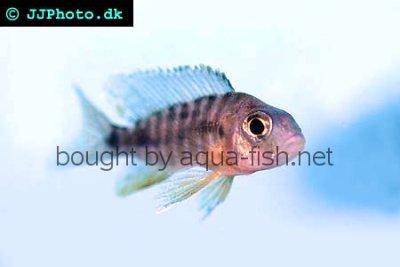


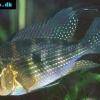 Thread-finned
Thread-finned 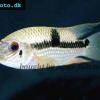 Acara
Acara 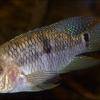 Yellow
Yellow 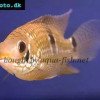 Patrick's
Patrick's 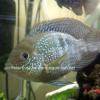 Blue
Blue 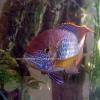 Green
Green 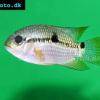 Acara
Acara 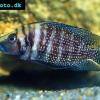 White
White 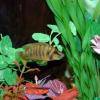 Compressed
Compressed 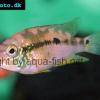 Pastel
Pastel 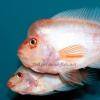 Midas
Midas 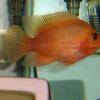 Red
Red 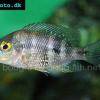 Bluemouth
Bluemouth 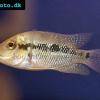 False
False 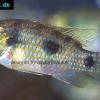 African
African 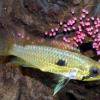 Agassiz's
Agassiz's 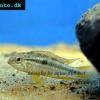 Banded
Banded 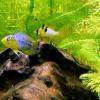 Yellow
Yellow 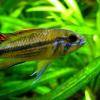 Cockatoo
Cockatoo 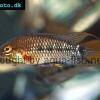 Blue
Blue 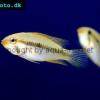 Blackstripe
Blackstripe 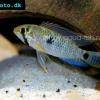 Highfin
Highfin 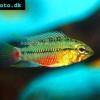 Redstripe
Redstripe 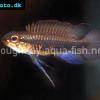 Threadfinned
Threadfinned 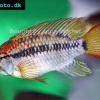 Macmaster’s
Macmaster’s 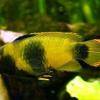 Panda
Panda 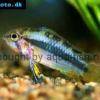 Norbert’s
Norbert’s 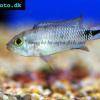 Blue
Blue 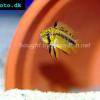 Thin-line
Thin-line 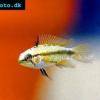 Three-striped
Three-striped 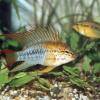 Viejita
Viejita 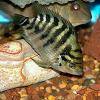 Flier
Flier 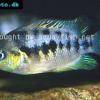 Archocentrus
Archocentrus 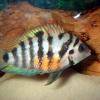 Convict
Convict 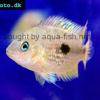 Seven
Seven 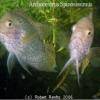 Spiny
Spiny 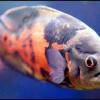 Oscar
Oscar 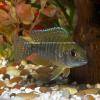 Sunshine
Sunshine 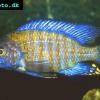 Chitande
Chitande 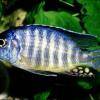 Midnight
Midnight 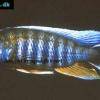 Lake
Lake 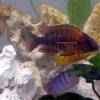 Sunshine
Sunshine 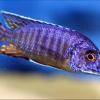 Aulonocara
Aulonocara 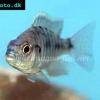 Nyasa
Nyasa 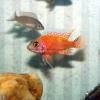 Ruby
Ruby 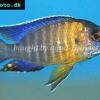 Grants
Grants 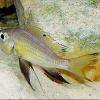 Aulonocranus
Aulonocranus 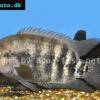 Chameleon
Chameleon 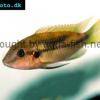 Benitochromis
Benitochromis 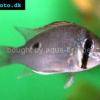 Orinoco
Orinoco 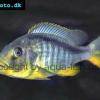 Yellow
Yellow 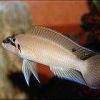 Brichard’s
Brichard’s 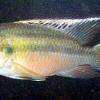 Guenther’s
Guenther’s 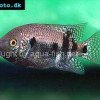 Southern
Southern 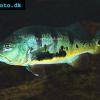 Cichla
Cichla 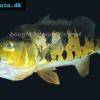 Peacock
Peacock 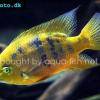 Chiseltooth
Chiseltooth 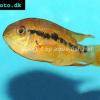 Bolivian
Bolivian 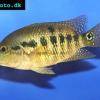 Red
Red 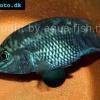 Many-pointed
Many-pointed 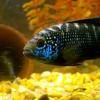 Jack
Jack 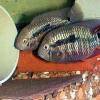 Red
Red 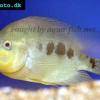 Three
Three 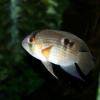 Keyhole
Keyhole 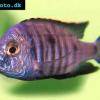 Azureus
Azureus 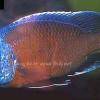 Red
Red 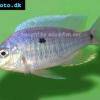 Jackson’s
Jackson’s 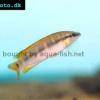 Crenicichla
Crenicichla 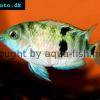 Honduran
Honduran 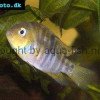 Blue-eye
Blue-eye 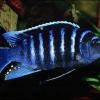 Afra
Afra 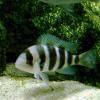 Frontosa
Frontosa 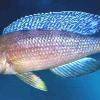 Slender
Slender 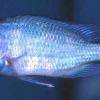 Malawi
Malawi 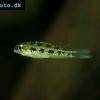 Chequerboard
Chequerboard 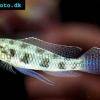 Checkerboard
Checkerboard 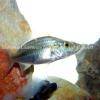 Malawi
Malawi 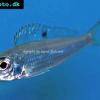 Ectodus
Ectodus 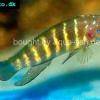 Tanganyika
Tanganyika 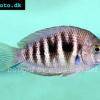 Canara
Canara 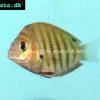 Green
Green 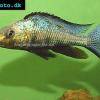 Rostratus
Rostratus 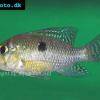 Pearl
Pearl 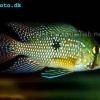 Geophagus
Geophagus 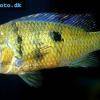 Yellowhump
Yellowhump 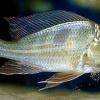 Suriname
Suriname 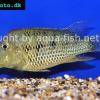 Redhump
Redhump 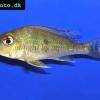 Red
Red 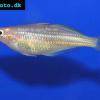 Dority’s
Dority’s 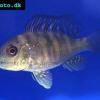 Argentine
Argentine 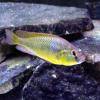 Burton’s
Burton’s 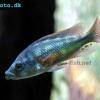 Victoria
Victoria 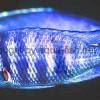 Haplochromis
Haplochromis 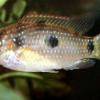 Jewel
Jewel 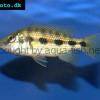 Banded
Banded 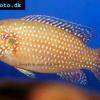 Lifalili
Lifalili 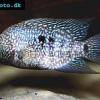 Lowland
Lowland 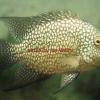 Texas
Texas 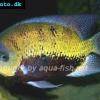 Pantano
Pantano 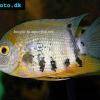 Severum
Severum 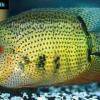 Banded
Banded 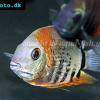 Severum
Severum 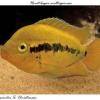 Rainbow
Rainbow 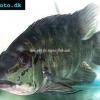 Parrot
Parrot 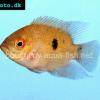 Chocolate
Chocolate 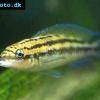 Brown
Brown 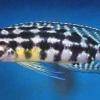 Marlieri
Marlieri 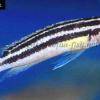 Golden
Golden 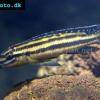 Striped
Striped 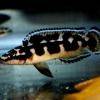 Masked
Masked 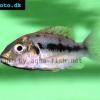 Konye
Konye 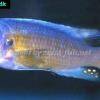 Blue
Blue 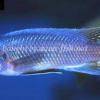 Trewavas
Trewavas 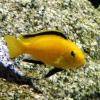 Electric
Electric 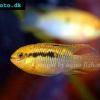 Dwarf
Dwarf 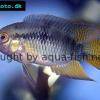 Redbreast
Redbreast 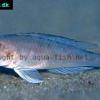 Lamprologus
Lamprologus 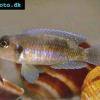 Gold
Gold 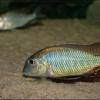 Greenface
Greenface 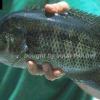 Mayan
Mayan 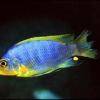 Aurora
Aurora 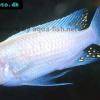 Blue
Blue 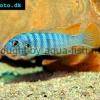 William’s
William’s 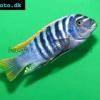 Zebra
Zebra 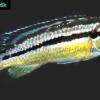 Malawi
Malawi 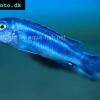 Blue
Blue 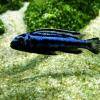 Blue
Blue 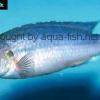 Mbuna
Mbuna 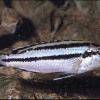 Parallel
Parallel 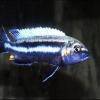 Purple
Purple 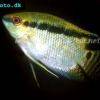 Flag
Flag 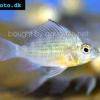 Bolivian
Bolivian 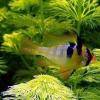 Ram
Ram 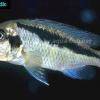 Basket
Basket 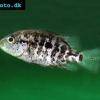 Haitian
Haitian 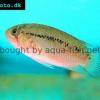 Zebra
Zebra 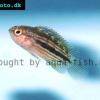 Striped
Striped 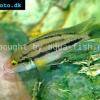 Neolamprologus
Neolamprologus 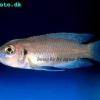 Brevis
Brevis 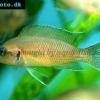 Fairy
Fairy 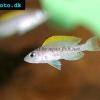 Neolamprologus
Neolamprologus 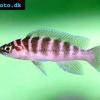 Cylindricus
Cylindricus 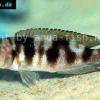 Hecq’s
Hecq’s 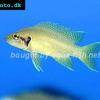 Neolamprologus
Neolamprologus 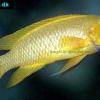 Lemon
Lemon 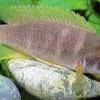 Mustax
Mustax 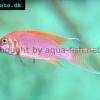 Daffodil
Daffodil 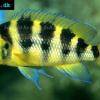 Six-bar
Six-bar 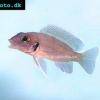 Five-bar
Five-bar 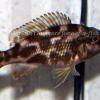 Marbled
Marbled 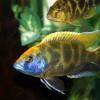 Giraffe
Giraffe 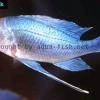 Blue
Blue 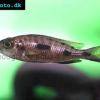 Sulphurhead
Sulphurhead 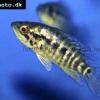 Wolf
Wolf 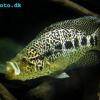 Jaguar
Jaguar 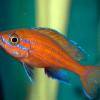 Blue
Blue 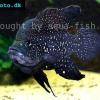 Marakeli
Marakeli 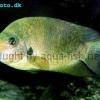 Madagascar
Madagascar 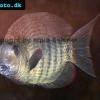 Pinstripe
Pinstripe 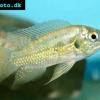 Pelmatochromis
Pelmatochromis 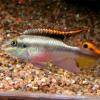 Kribensis
Kribensis 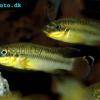 Striped
Striped 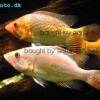 Red
Red 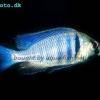 Deepwater
Deepwater 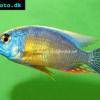 Fenestratus
Fenestratus 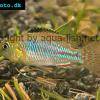 Nichols’
Nichols’ 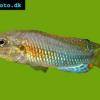 Southern
Southern 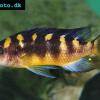 Bumble
Bumble 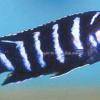 Demason’s
Demason’s 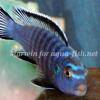 Slender
Slender 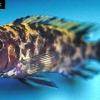 Red
Red 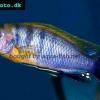 Mbuna
Mbuna 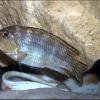 Malawi
Malawi 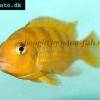 Kenyi
Kenyi 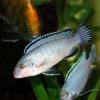 Powder
Powder 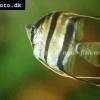 Altum
Altum 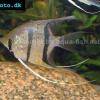 Angelfish
Angelfish 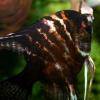 Angelfish
Angelfish 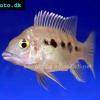 East
East 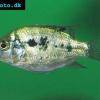 Juba
Juba 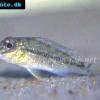 Earth
Earth 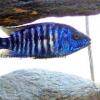 Electric
Electric 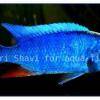 Azure
Azure 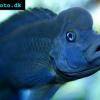 Lionhead
Lionhead 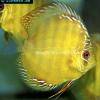 Discus
Discus 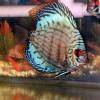 Blue
Blue 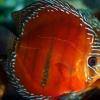 Red
Red 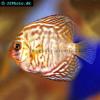 Zebra
Zebra 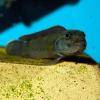 Brichard’s
Brichard’s 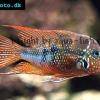 Blue
Blue 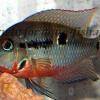 Firemouth
Firemouth 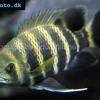 Zebra
Zebra 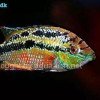 Yellow
Yellow 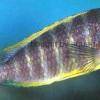 Blue
Blue 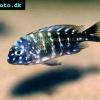 Dwarf
Dwarf  Blunthead
Blunthead 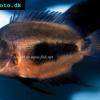 The
The 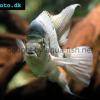 White
White 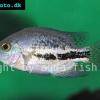 Twoband
Twoband 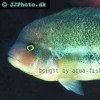 Fenestratus
Fenestratus 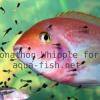 Window
Window 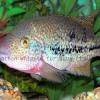 Tailbar
Tailbar 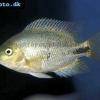 Black
Black 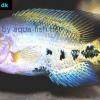 Redhead
Redhead 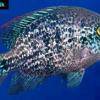 Oaxaca
Oaxaca 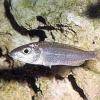 Xenotilapia
Xenotilapia